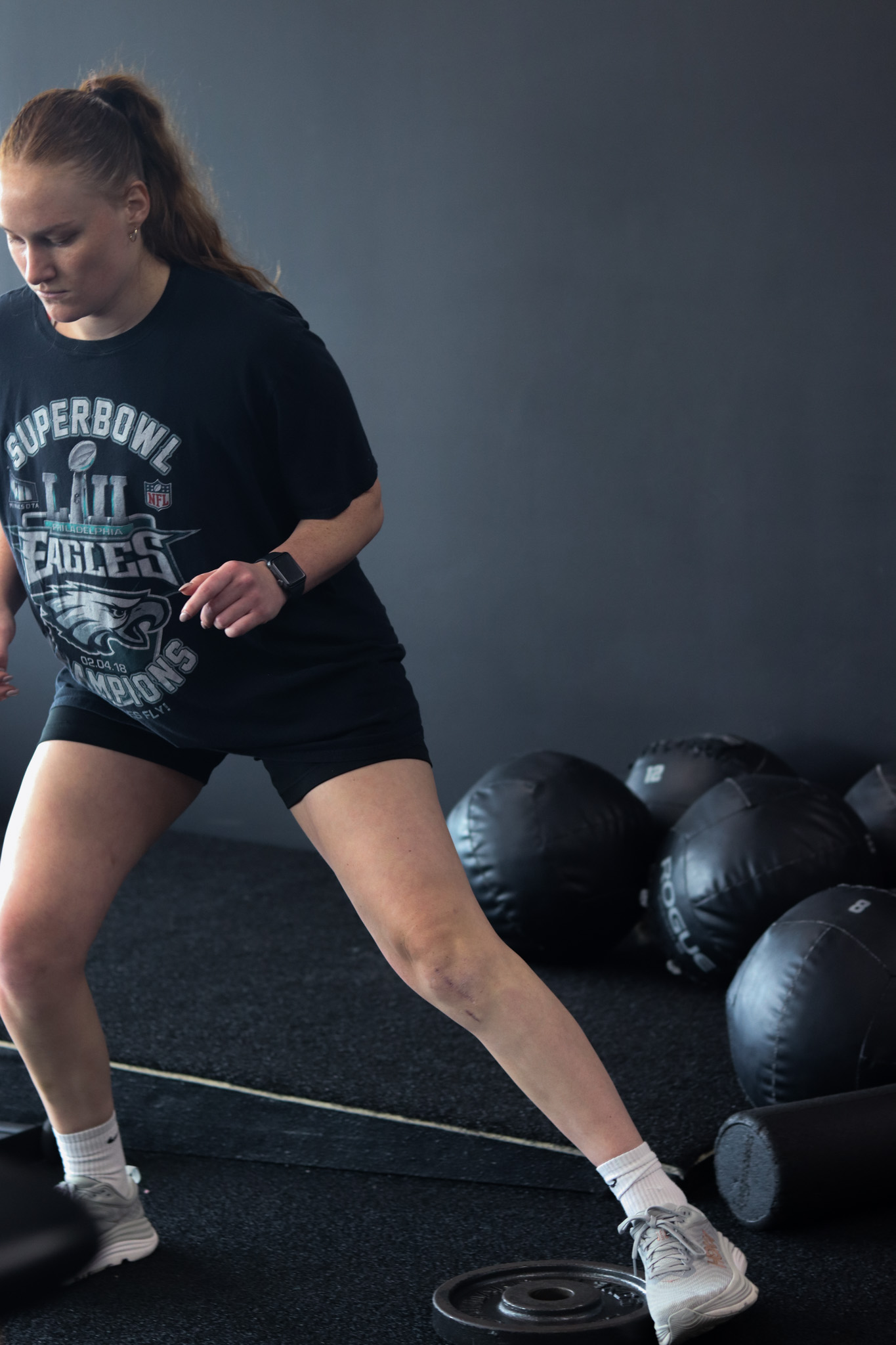This post was crafted from a presentation by our DPT student David Jarrett.
Returning to the field after an injury is never easy, especially for athletes in multi-directional, high-intensity sports like baseball, soccer, football, and lacrosse. The final stages of rehabilitation are often the most challenging, not just physically but mentally. This is what helps you master the late stages of rehab and return better than prior to your injury. These phases demand precision, power, and confidence, combining sport-specific movements with real-world scenarios to ensure athletes are ready for competition.
The Challenge of Late-Stage Rehab
Once you’ve moved past pain management and regained basic strength, power and movement capacity, you enter the most demanding phase of recovery: late-stage rehab and return to play. Often this stage is sloppy and underwhelming. This stage isn’t just about getting stronger; it’s about moving well, moving fast, and moving safely under unpredictable and unpredictable conditions. Whether you’re making a quick cut to evade a defender or sprinting down the sideline, your body needs to handle dynamic forces in multiple directions and thus be prepared for these demands.
The Phases Before the Final Push
Before we get into the specifics of late-stage rehab, it’s important to understand how we got here:
- Acute Phase: Focused on pain management, reducing inflammation, and maintaining mobility.
- Subacute Phase: Restoring joint mobility, flexibility, and beginning isometric strength work.
- Strength and Power Development: Progressive resistance training to build surrounding tissue strength.
- Sports-Specific Conditioning: Higher-intensity exercises that mimic the demands of your sport.
The Key to Late-Stage Success: Multidirectional and Semi-Sport Drills
This final phase is where the real work begins. Athletes must demonstrate agility, force absorption, force production, and movement competency. Here is a general outline of how to progress.
1. Force Absorption and Force Production
Athletes need to separate force absorption from force production before combining them into more complex movements. We start with gradual loading and work on eccentric control to prepare the muscles and joints for high-velocity impacts.
- Force Absorption Drills: Split squats, controlled landings, and forward lunge deceleration with med balls.
- Force Production Drills: Low-velocity concentric movements, progressing to higher velocity as control improves.
2. Movement Competency and Symmetry
Athletes often find a way to complete a movement — but not always correctly or efficiently. We emphasize movement progression and regularly assess the limb symmetry and force components to ensure balanced movement patterns.
Example:
- Basic Drills: Wide-stance weight shifting and med ball chops.
- Progressive Drills: Lateral lunge with dynamic loading, moving to single-leg deceleration with weight shifts.
Designing Drills with Spatial and Temporal Challenges
The best late-stage drills challenge athletes with spatial and temporal uncertainty. For example, a T-drill with reactive cues forces athletes to think and move in unpredictable ways, much like in real game scenarios. We use:
- Spatial Certainty: Clear, set reference points for directional changes.
- Spatial Uncertainty: Adding reference points for directional changes or reaction-based cues.
- Temporal Certainty: Known start and stop times.
- Temporal Uncertainty: Reacting to a coach’s verbal cue or an unpredictable visual signal.
Managing Order to Chaos
Late-stage rehab is all about managing the transition from order (predictable movements) to chaos (game-like situations). Start with drills that have clear, consistent patterns and gradually increase uncertainty and complexity.
- Order Phase: Pre-planned movements, low variability.
- Controlled Chaos Phase: Controlled cues and multi-directional movements.
- Game Simulation Phase: Integrating complex patterns under fatigue.
Why Testing and Metrics Matter
We track progress with objective metrics like force plate data, sprint times, and observation of the athlete. This approach allows us to adapt the program as needed while giving the athlete tangible feedback on their readiness.
Metrics to Measure:
- Sprint Speed and Contact Time: Measure how quickly the athlete can accelerate and decelerate.
- Force Output: Ensure the ability to produce power under reactive conditions.
- Symmetry Testing: Identify any residual strength or coordination gaps.
Building Confidence through Simulation
Rehab isn’t just about physical ability, it’s also about mental confidence. Athletes need to feel that they can react without hesitation. We use dual-task drills. Combining physical movements with cognitive challenges, to replicate game conditions. This not only helps to rehab physical characteristics but mental as well.
The Bottom Line
Returning to the field after injury requires more than just strength and conditioning. It’s about integrating power, agility, and mental readiness through strategic, game-like drills. At Petroski Physio, we take pride in our late-stage rehab methods that prepare athletes not just to play — but to excel under pressure.
Got questions about your return-to-play program? Reach out to us at Petroski Physio. Let’s make your comeback a success.
Summarized and edited by Nick Petroski DPT

